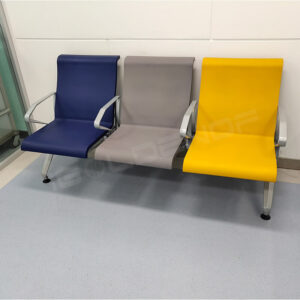Setting up a patient room in your healthcare facility goes far above and beyond the design considerations of the everyday office or living space. Not only do your patient rooms need to look clean and professional, but they also need to be comfortable for your patients and conducive to the work that your healthcare providers perform on a daily basis. When it comes to furniture for the space, here are the basics you’ll need.
Patient Room Guest Chairs and sofas. While patients need to be made comfortable during their stay, it’s important to remember that family and friends of inpatients often spend long hours at the hospital in support of their loved ones. For this reason, comfortable guest seating should be kept not only in your hospital waiting room, but in the patient rooms as well. From well-padded arm chairs to sleeper sofas that pull out into beds, there are plenty of options to choose from in this category, and you’ll be able to find a solution no matter how small or large your space may be.

The waiting space in any healthcare facility serves many purposes – it establishes a first impression, it offers a place to rest and recharge and it offers patients the chance to connect with caregivers and others. Waiting spaces are valuable real estate and are often busy, so planners and facility managers need to determine how to get the best utilization from the space they have. There is often a temptation to cram in rows of ganged seating, with the mindset that more seats equals more use. In fact, this approach often leads to the opposite result! Why?
Studies of waiting room utilization have shown that some seats in busy waiting area are almost always filled and others are left completely empty. In some cases, people will stand rather than choose one of the “unpopular” seats. So – what makes a seat popular?
Proximity – this varies by practice and patient population, but studies show patients are more likely to choose seating near amenities. That might mean a charging station, a coffee bar, in view of a television or in pediatric spaces, the children’s play area.

Personal Space – generally, patients will not choose to sit right next to a stranger unless no other options are available (and will sometimes choose to stand!). Studies show that even when seating is arranged in back-to-back rows, people will space themselves so they aren’t directly behind someone. Personal space, especially when patients may feel especially vulnerable due to illness, is a very important consideration.
